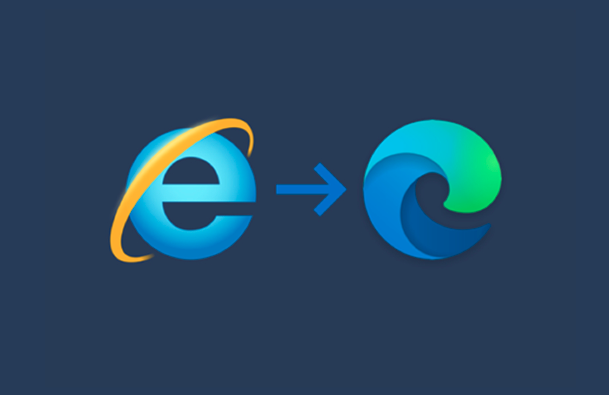If you’re of a certain age you’ll remember Internet Explorer being the hallmark of web 1.0, back in simpler times when websites were entirely HTML-based and JavaScript was considered a technological innovation.
Internet Explorer Shuts Up Shop

On June 15th 2022 Microsoft finally pulled the plug on Internet Explorer after 27 years, and most people won’t be surprised or sad to see it go. Explorer spent several years being the butt of the internet’s jokes, back when memes were a new concept, before becoming so irrelevant that it wasn’t even worth making fun of anymore.
Internet Explorer was one of the first major internet browsers, based on a programme called Mosaic by a small software developer in Chicago. Officially launched in 1995, Internet Explorer was many users’ first taste of the internet.
If you’re old enough to know what dial-up sounds like, then you probably started your internet journey with Explorer. The browser was initially a purchasable add-on before it became a standard programme with all purchases of Windows and a free download for Mac users. By 2003, Internet Explorer was responsible for 95% of the world’s web browser usage.
The Good Old Days
Whether you use your internet browser for searching for news articles, social media, or even for GamblingDeals, almost all of us will have used Internet Explorer at some point in our lives.
It’s been used for picking your top 8 friends on Myspace, creating your very first Facebook post & even starting blogs via Live Journal. It’s certainly done its time with regards to internet access and for older internet users isn’t something that will be forgotten anytime soon.
For many, Internet Explorer represents the golden age of the internet, when everyone was still just figuring it out, but it didn’t last long.
In the late 90s, Microsoft went through a messy legal battle, accused of using their monopoly to dissuade others from developing competitor platforms, and this was only the start of Internet Explorer’s issues.
In the early 2000s, the browser was plagued with security issues which paved the way for competitors to launch their own browsers.
Winding Down Its Services
In 2005 Microsoft announced that they would no longer support Macintosh users, suggesting they use Safari instead, and from there the company’s market share took a nose dive.
Firefox 2.0 launched in 2006 and very quickly built up a loyal fan base, far beyond the developers and techies that had used the first version in the previous two years. In 2008 Google announced the launch of their own browser which became an instant hit.
The People Taking Over
There’s no doubt that Chrome and Firefox were the biggest competitors, but Microsoft dug Internet Explorer’s own grave. As the web advanced, Google and Mozilla developed the software.
They created a space for Web 2.0 to thrive, allowing developers to create their own plugins and generally helped the internet to be a more fun place. Meanwhile, Microsoft seemed to ignore any developments – when the World Wide Web Consortium released guidelines, Microsoft ignored them which made webpages look different and in some cases non-functional.
As Google and Mozilla continued to strive for the best, Microsoft continued to stick their heads in the sand. Updates for the browser were few and far between – web 2.0 all but ground Explorer to a halt and it became known as the slowest browser out there. On top of this, very little was done about massive security breaches and the browser became known as one to avoid.
Put simply, Microsoft made their users feel like they didn’t care about them, so their users went elsewhere. Google’s cross-platform tools like Maps, search and YouTube was the final nail in the coffin.
These days Google Chrome is probably the most popular search engine and this is due to the fact that it works so well with other features – you can search for a place & it will tell you how far it is away from where you are.
Back in the day Ask Jeeves was a search engine that tried to be different to others and answer your question directly rather than sending you to a page to get results. This proved popular at the time and in its own way it went viral.
However, it didn’t stick around forever and now Google Chrome and Google Search take its place rather cleverly; giving people the chance to get their questions and queries answered quickly and easily.
This adaptation of technology is something that Internet Explorer didn’t really pick up on quick enough & that is a big reason as to why it stopped being so popular, especially amongst younger internet users.
The History of Internet Explorer
By 2017, Internet Explorer had just a 7% market share left, and the only reason it still had any market share was thanks to old computers that hadn’t been updated. In the wider world, the only thing that Explorer was known for was being subject to millions of memes about slow speeds and poor compatibility.
Internet Explorer’s long overdue end was announced via the Windows blog. They thanked their users for their support over the years, before quickly moving on to promoting their new browser software- Edge.
The company had been phasing out Internet Explorer for years, shipping new PCs with Edge instead. Microsoft claims that Edge is faster, more secure and more modern, but also offers compatibility for older websites and applications.
Ultimately, Internet Explorer’s downfall was Microsoft’s own doing. While other long-standing browsers have continued to represent innovation as they move with the times, Microsoft left Internet Explorer to simply exist.
It fell behind to the point that it was easier to build a new browser than work on what they already had. Will the same happen to Edge in a few years? Who knows!
One thing we do know is that internet users are always wanting more & it is important that web browsers keep up with these needs if they want to stay relevant and popular.
Join 25,000+ smart readers—don’t miss out!







